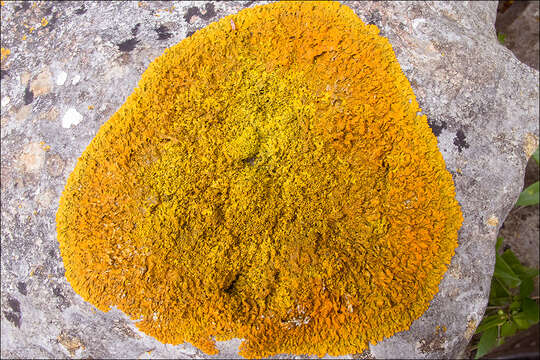Xanthoria-calcicola_12

Description:
Xanthoria calcicola Oxner, syn.: Xanthoria aureola auct., Physcia parietina f. congranulata Cromb, Teloschistes parietinus f. congranulatus (Cromb.) G. Merr., Xanthoria aureola f. congranulata (Cromb.) Erichsen, Xanthoria parietina f. congranulata (Cromb.) B. de Lesd, Xanthoria parietina subsp. calcicola (Oxner) Clauzade & Cl. RouxFamilly: TeloschistaceaeEN: Orange Lichen , DE: Slo.: ? Dat.: June 21. 2010Lat.: 44.35686 Long.: 14.774925Code: Bot_0431/2010_IMG0991Habitat: Sub-Mediterranean macchia, almost flat terrain, calcareous ground, sunny and dry place, average precipitations ~ 1.000 mm/year, average temperature 13-15 deg C, elevations 17 m (55 feet), Sub-Mediterranean phytogeographical region. Substratum: bare calcareous rock.Place: Island Olib, South of village Olib, 150 m north of St. Nikola church, Adriatic Sea, Rijeka region, Croatia EC. Comment: Xanthoria calcicola is a very showy, vividly reddish-orange lichen. The thallus can sometimes grow up to 20 cm in diameter. It is often nicely round, however, not necessarily. Many times several thalli grow confluent or are of irregular shape. The lichen is very similar to much more common Xanthoria parietina. Xanthoria calcicola can be distinguished from it by +/- densely isidiate central part of the thallus (see Fig.:11), which is not the case with Xanthoria parietina. Also, apothecia are very rare, while Xanthoria parietina is almost always fertile with many, many apothecia. Ref.:(1) C.W.Smith, et all, The lichens of Great Britain and Ireland,The British Lichen Society,(2009), p 969.(2) V. Wirth, Die Flechten Baden-Wrttembergs, Teil.2., Ulmer (1995), p 974.(3) www.gbif.org/occurrence/2834853749 (accessed July 20. 2021)
Included On The Following Pages:
- Life (creatures)
- Cellular (cellular organisms)
- Eukaryota (eukaryotes)
- Opisthokonta (opisthokonts)
- Nucletmycea
- Fungi (mushrooms, lichens, molds, yeasts and relatives)
- Dikarya
- Ascomycota (sac fungi)
- Lecanoromycetes
- Teloschistales
- Teloschistaceae
- Xanthoria (orange wall lichen)
- Xanthoria calcicola
This image is not featured in any collections.
Source Information
- license
- cc-by-nc-sa
- copyright
- Amadej Trnkoczy
- photographer
- Amadej Trnkoczy
- original
- original media file
- visit source
- partner site
- Flickr Group
- ID


